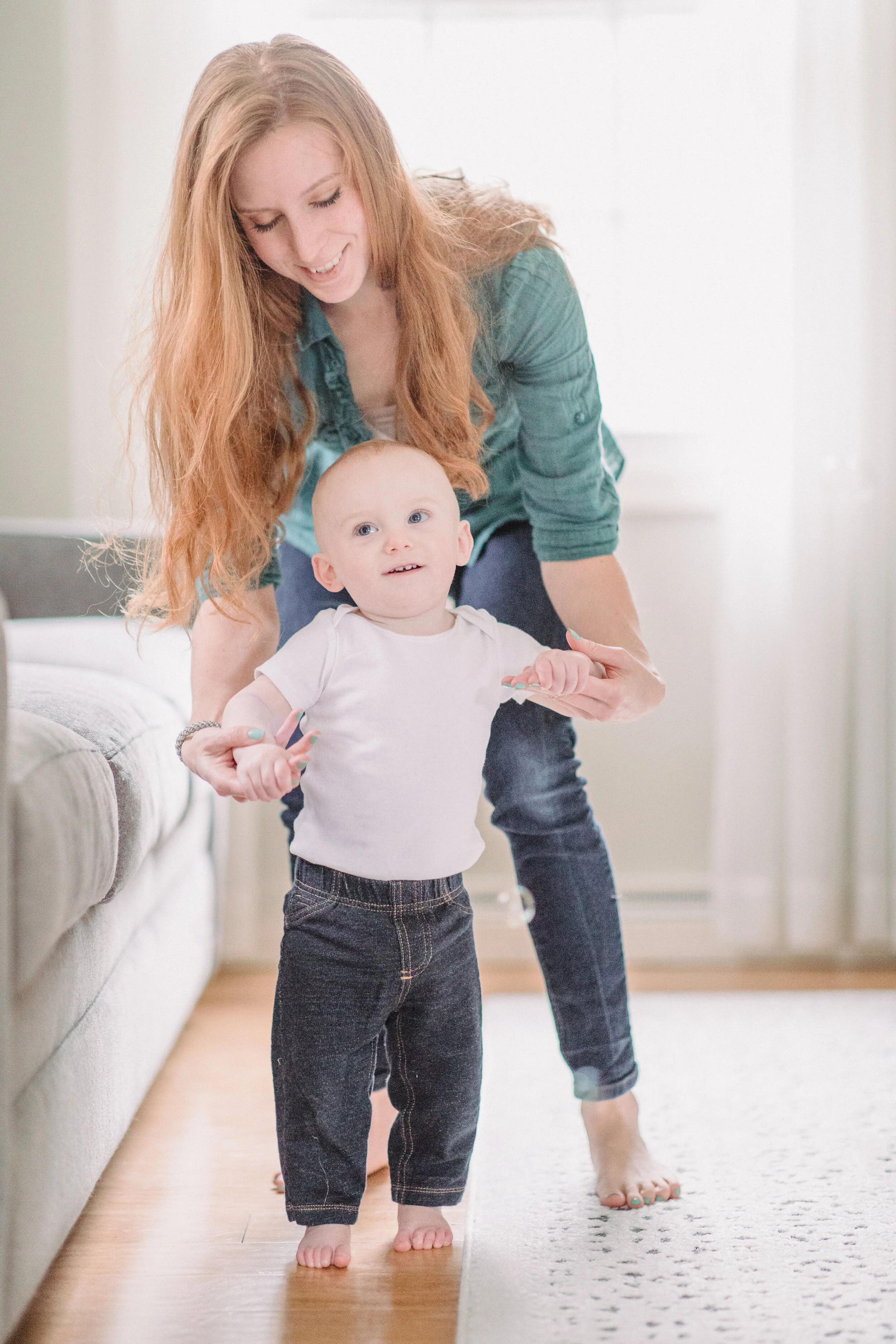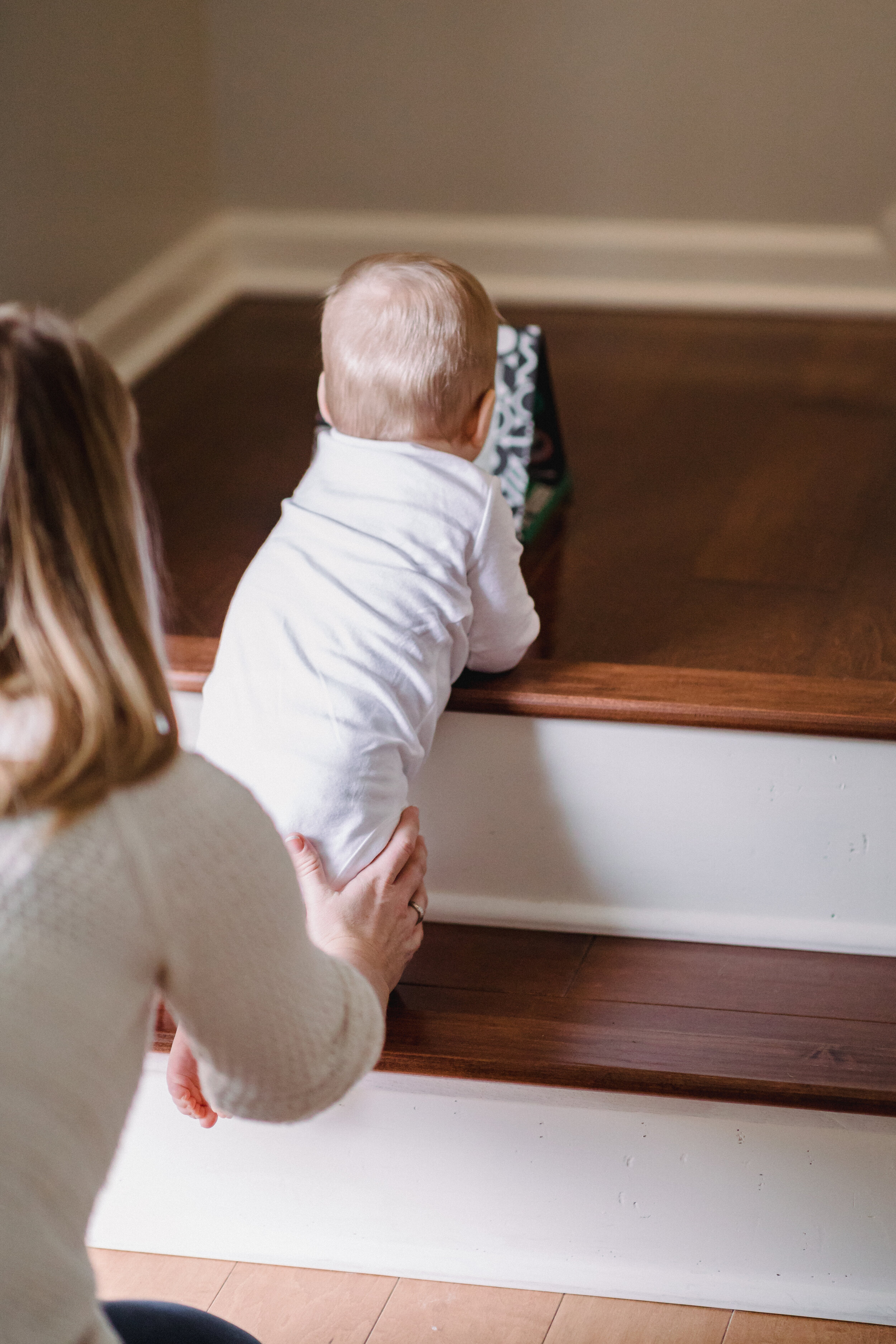When to start
The American Academy of Pediatrics (AAP) recommends that babies be exclusively breastfed, with expressed breast milk or iron fortified formula as acceptable alternative options, for the first six months of life. But, you shouldn’t just look at the calendar to tell you if it’s time to start. Babies need to have mastered several gross motor and oral-motor skills prior to being introduced to solids to improve safety (i.e., reduce risk of choking) and overall tolerance of those first meals.
Why wait until at least 6 months?
Babies are born with several reflexes that help them feed and keep them safe from choking immediately at birth. One of those reflexes is the tongue-thrust reflex, which causes baby to forcefully push his/her tongue out of the mouth when something other than breast or bottle touches the lips or tongue. This means that anything that enters baby’s mouth in the front ⅓-½ will be “thrusted” or pushed out of the mouth, too. This reflex is protective to help baby avoid choking in the first months of life.
Around 4 months of age, baby will begin to integrate this tongue-thrust and reflexive sucking to develop more complex and intentional mouth movements by bringing hands and toys to his/her mouth for oral exploration. These early mouthing experiences lay the foundation for later jaw, lip, and tongue movements necessary for safe transition to solid foods. Trying to start solids before these reflexes have integrated can easily lead to baby pushing the food out of his/her mouth, fussing, or gagging.








